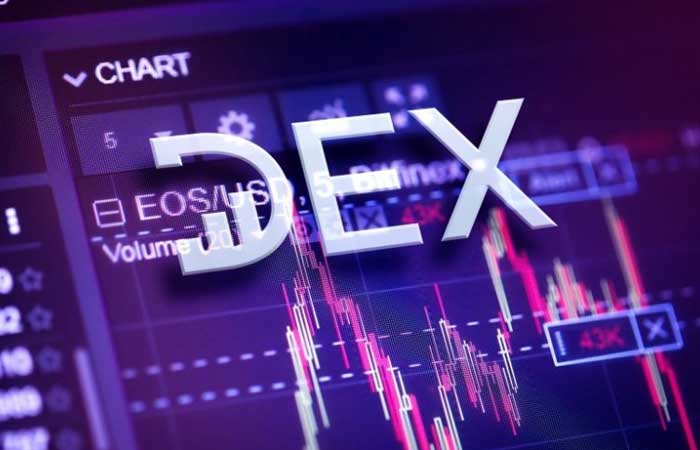Back in 2012, as an excited economics undergrad, I decided I wanted to invest some of the money I had into bitcoin (BTC). It was a complicated process that involved driving to Walmart (WMT) and sending a MoneyGram money order to a company called ZipZap, which would then send my money to a company called BitInstant.
After a few weeks, BitInstant would deposit my bitcoin into my wallet on the Japanese bitcoin exchange Mt. Gox. The entire process took over three weeks, and I always wondered how this innovative digital currency would ever replace its competition if this was the process.
Shortly after my first bitcoin experience, centralized companies such as Coinbase (COIN), QuadrigaCX and Bitstamp appeared on the scene. These companies had bank accounts, which meant they were essentially plugged into the modern financial system and made it significantly easier to purchase cryptocurrencies.
These centralized crypto exchanges seemed to work perfectly – until they didn’t. Mt. Gox was attacked in 2014 and over 850,000 bitcoins were stolen. Bitstamp was hacked in 2015, BTC-e was shut down in 2017 and the infamous QuadrigaCX was hacked – by its owner and CEO – in 2018 and eventually shut down, having lost all its clients’ coins, in 2019.
Not all centralized exchanges have had issues. There are many currently operating that have had years of successful business operations and many happy customers. Centralized exchanges have their own negatives, however.
They’re forced to obey know-your-consumer (KYC) regulations of the country in which they reside, they have limits in terms of order book size and they require the user to trust the solvency of the business, something often seen as a negative by native crypto users.
A combination of these issues, along with the development of smart contracts, eventually led to an elegant solution: an exchange platform built entirely on crypto, in a completely trustless and decentralized manner – a decentralized exchange. For the second part of this series on decentralized finance (DeFi), we’ll explore why decentralized exchanges, or DEXs, are so important in the crypto economy.
What are the benefits of DEXs?
DEXs are very complex smart contracts but they have simple goals: to provide liquidity to anyone who wishes to trade cryptocurrencies. The most popular DEX is Uniswap, which is built entirely on the Ethereum blockchain. Uniswap provides a decentralized trading platform for any crypto user who wishes to trade Ethereum-based tokens.
DEXs have a few significant benefits over centralized exchanges. They do not require KYC and they operate 24/7. They also provide investors with yield farming opportunities, which are opportunities to help facilitate decentralized swapping – or trading – of digital assets in exchange for a small fee.
And the smart contract code (Uniswap is written in Solidity) is open and transparent, allowing crypto natives to simply verify the code instead of trusting a centralized business to be solvent.
DEXs do, however, have some drawbacks. Transactions are irrevocable, they only allow you to trade a single chain’s asset – Uniswap is only on Ethereum, for example – and there’s rug pull risk and impermanent risk (topics we’ll discuss in greater detail in the next article in this series).
So how do these DEXs work?
Unlike centralized exchanges (in both crypto and traditional finance, or TradFi) that use order books, a system that has worked well for over two centuries, DEXs use two innovations to provide services to their users: liquidity pools and automated market maker services.
Essentially, DEXs provide liquidity – pools of paired assets – that traders can use to swap one token for another. Liquidity pools are smart contracts that traders utilize to move in and out of certain tokens based upon their goals.
Automated market maker services are complex smart contracts within the liquidity pool smart contracts that control the price of certain crypto trading pairs in liquidity pools and increase or decrease price based on supply and demand in the market.
The smart contract that governs liquidity pools relies on a specific formula for determining the price of each token. The formula is X * Y = k. X and Y are represented by tokens, and k represents the constant. This formula essentially governs the liquidity pool. (We’ll do a deep dive into liquidity pools and automated market maker systems in my next article.)
Not only do liquidity pools offer traders access to decentralized liquidity, they also offer investment opportunities to those wishing to stake assets in the liquidity pool. When a user swaps assets through a liquidity pool, a very small fee is paid to the individuals who are providing the liquidity.
To put this in common TradFi terms, those who contribute capital to the liquidity pools essentially earn a fee similar to that of a market maker. Liquidity pools, especially new ones, offer very high yields to investors. This concept is called yield farming, and provides income opportunities for those who understand the concept.
In Q4 2021, for instance, Uniswap processed $238.4 billion worth of trades, an increase of 61% from Q3. A total of $681.1 billion was traded through Uniswap liquidity pools in 2021.
Takeaways
The main takeaway is that DEXs provide all the same services as centralized exchanges, yet they do it in an anonymous and trustless manner. Technology now allows for this to exist outside of any regulated industry and increases access to these financial services for everyone.
Prior to the creation of Ethereum, traders were forced to use a centralized system to exchange and trade any asset. Smart contracts have opened the doors to a trustless and completely open financial system that, if used correctly, has the chance to bring economic benefits to all participants.
Read full story on Coindesk



